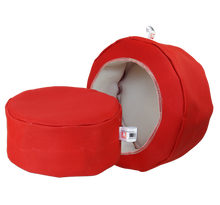 Loading... Please wait...
Loading... Please wait...- Call Us On +44 01515285190
- Home
- My Account
- View Cart
Categories
Regulations
When installing In Ceiling Speakers, consideration needs to be given to the impact on fire protection, thermal insulation and resistance to the passage of sound.
Part P. Regulations 4 (2) states that," on completion of work, the building should be no worse in terms of the level of compliance with other applicable Parts of Schedule 1. These may include, but are not limited to, Parts B, E, F and J."
We've listed below just some of the relevant extracts from those parts. What is clear is that there are very few if any cicumstances where additional protection is not required and if you are planning to install in ceiling speakers without fire hoods we would recommend you clear this with the relevant Building Control Officer.
PART B REVISED APRIL 2007
Section 7: Protection of openings and fire-stopping
7.2
“ If a fire separating element is to be effective, then every joint, or imperfection of fit, or opening to allow services to pass through the element, should be adequately protected by sealing or fire-stopping so that the fire resistance of the element is not impaired”
7.4
“ Consideration should also be given to the effect of services that may be built into the construction that could adversely affect its fire resistance. For instance, where downlighters, loudspeakers or other electrical accessories are installed, additional protection may be required to maintain the integrity of a wall or floor”.
7.14
“ Guidance on the process, installation and maintenance of passive fire protection is available in Ensuring Best Practice for Passive Fire Protection in
Buildings (ISBN: 1 87040 919 1) produced by the Association for Specialist Fire Protection (ASFP)”
Section 12 Ceilings
“The fire resisting ceiling selected, should have documented test evidence to show that it meets the appropriate level of fire resistance for the relevant application and should be designed, specified and constructed to fully satisfy the manufacturers instructions.
Lighting fittings, and other penetrations through the ceiling, must also have the same demonstrated standard of fire resistance, and be appropriate for the type of ceiling.”)
The IEE Wiring Regulations 16th Edition BS 7671:2001 Section 527-02-01 says:“Where a wiring system passes through elements of building construction such as floors, walls, roofs, ceilings, partitions or cavity barriers, the openings remaining after the passage of the wiring system shall be sealed according to the degree of fire resistance of the element concerned (if any).”
Part P. Regulations 4 (2) states that, on completion of work, the building should be no worse in terms of the level of compliance with other applicable Parts of Schedule 1. These may include, but are not limited to, Parts B, E, F and J., For example, one or more perforations of a ceiling lining beneath a floor - made to accommodate recessed lighting or similar fittings - may have an adverse effect on that floors performance in terms of its resistance to fire and sound penetration. Due regard should therefore be paid to the guidance in Approved Document B (Fire Safety) on the performance of fire resisting and compartment floors, and Approved Document E (Resistance to the passage of sound).
New Products
-
£49.00 (inc VAT) £40.83 (ex VAT)


